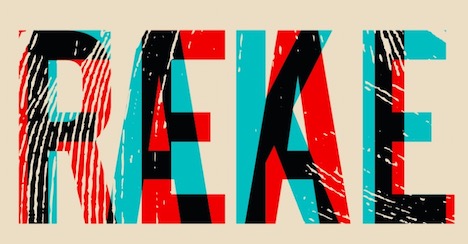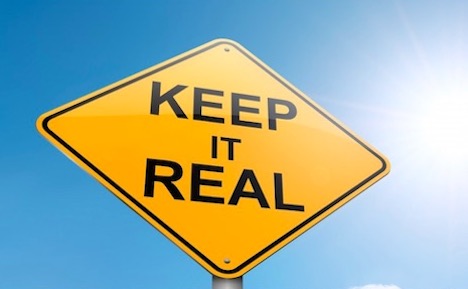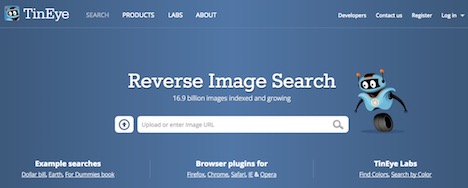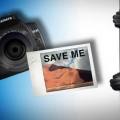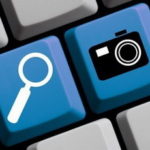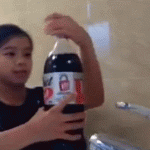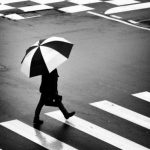20 Ways to Verify the Authenticity of a Photo
We live through our photos. Motto “Pictures or it didn’t happen” is taken very seriously by millions of people across the planet and some of them are more than willing to provide photos for something that never happened. Getting a good photo of a view, dessert or your significant other has become so important that we stop at nothing to make them perfect – only filtered sky is the limit.
If it’s your job to deal with photos and know exactly which ones are original and which can’t pass the authenticity test, then you’re in for one hell of a ride. With Photoshop and so many different ways to take someone else’s photos and claim them as one’s own, having efficient tools to check if a photograph you’re dealing with is real is paramount. Here are some tools to help you in your endeavors and enable you to tell with certainty a real feat of photography from a well-hidden fake.
This is the most used, but still a very accurate way to discover whether a photo is authentic or not. There are some amateur photographers that still make amazing photos, but could they really be making photos that are that good? When in doubt, ask Google and it will provide answers momentarily. Reversed Google Search basically means searching the internet by uploading a photo instead of a keyword expression. Once uploaded, Google search engine will do its magic in the matter of seconds and you’ll know what you’re dealing with.
2. JPEGSnoop
This app has a very suitable name, as it shows you everything there is to know about a certain image. Not only will you be able to see all metadata there is for the photo in question, but you will also be able to track down if there were any edits that clearly show that the picture isn’t an original. Another great thing is that the app isn’t limited to jpeg only, but it will be also able to analyze PDF, AVI, THM etc.
3. Train Your Eye
Sometimes you’re your own best tool and you don’t need an app to tell you if a photo is a fake. If you’ve been tinkering around photography long enough, it will become much easier for you to distinguish those little (or not so little) details that give away that the photo was severely photoshopped. You would be surprised with just how much you can see if you take some time to look at the details and spot giveaways, so before you try anything else, make use of your own eyes.
4. TinEye
This is another excellent search engine for photographs, which can be even more effective in verifying photos than Google. This tool has over almost 17 billion images to search through and it gives you results in no time. TinEye is actually a go-to tool of journalists and everyone else whose employment depends on having good and authentic photos.
5. Contact the Photographer
When in doubt, just ask. When you get a photo and you’re not sure about its authenticity, contact the photographer that sent it or someone who is above him, like the editor or any other kind of higher authority, if he/she has got one. Most of the time, honest people will not hesitate to reply confirming that it is in fact an original photo, some will even send you raw shooting material to prove that it’s their property. If you do the reversed search however and it turns out that the photo is stolen, then it would be wise to let photographer’s editor know what’s going on.
6. Check the Photographer
Maybe this sounds like borderline stalking, but how much do you want to gamble your reputation with a photo that you’re not sure is real? Doing a checkup on a photographer that sent you the image is another way you can test whether the photo is authentic. If the person from whom you’ve got the photo isn’t really reputable, then you might want to skip on working with them in general.
Fake Image Detector is a powerful online tool designed to verify the authenticity of images. By simply uploading an image, users can quickly determine if it has been digitally altered or manipulated. The tool uses advanced algorithms to analyze the image and detect any inconsistencies or signs of manipulation. With its user-friendly interface, Fake Image Detector makes it easy for anyone to check the authenticity of an image in just a few clicks.
8. Check the Place of the Photo
If you want to get very detailed with your authenticity search, then you can always look up how the place that the photo was taken at really looks like. This is a step not too many people think of, but it is a great way to call someone out on meddling with Photoshop and some serious image altering. You can use Geofeedia, which hovers over all important social networks and gathers images of locations all over the world and Panoramio will do the great job too.
9. C2PA.org (Coalition for Content Provenance and Authenticity)
C2PA.org is a collaborative effort by leading technology companies to develop standards and tools for verifying the authenticity of digital content, including images. The coalition aims to combat misinformation and promote trust in online content by establishing a framework for content provenance and authenticity. Through its initiatives, C2PA.org seeks to empower users to verify the authenticity of images and other digital content with confidence.
10. Look For Social Media Debunkers
There are influencers on social media who take pride in debunking all sorts of authenticity hoaxes and you can always turn to them. True, they might not be as trustworthy as the aforementioned tools, but it’s an interesting experience to see how experts of verification react to potentially fake images and how they’re able to pinpoint just why something is so elaborately fake.
11. The Verification Handbook
This is the Bible of all those who can’t do their job without verifying any and every fact and photo. This handbook is usually aimed at investigative journalism that requires quick and precise action and completely authentic data. The people behind this feat are renowned journalists from ABC, BBC and other great media magnates. In short, you get the knowledge of experts at your fingertips.
12. Foto Forensics
Like its name states, this tool will forensic accuracy tell you what exactly was altered in a photograph. The website runs on ELA aka error level analysis which is great in finding everything edited and added on a photo. After it’s done its work, the website will tell you just how much the photo was changed from its original state, and what’s more it will give you an insight into EXIF-data of the image as well.
13. How Good Is the Quality?
How many times have you been faced with a poor-quality photo? How many times did you think that the poor quality is actually a cover up for some serious (and not very good) photoshop? If that thought hasn’t crossed your mind until just now, then you will think about it constantly from now on. There are people who try to hide their sloppy photoshop by reducing the quality of the photo, but a dead giveaway is that the quality of the photo isn’t the same throughout the whole image. If you spot this, then you can sure that something isn’t right.
Yandex Image Search is a powerful reverse image search engine that can help users verify the authenticity of images. By uploading an image or entering its URL, users can search for similar images on the web and check for any instances of the image being used elsewhere. With its extensive database and advanced search algorithms, Yandex Image Search provides users with reliable results to help them verify the authenticity of images.
15. Light and Curvature
Some of the more apparent indicators that the photo isn’t authentic are the light and unnatural curved surfaces on the image. Legitimacy of any photo will easily be compromised as soon as you realize that the light doesn’t fall naturally or that there are objects that were affected by some effect and now look bent out of shape. These tattletales are very easy to spot in general, and even if they are more subtle, it’s not very hard to spot them and discard the photo as inauthentic.
Authentic photos are definitely a valuable asset to have, but they aren’t necessarily easy to come by. These tools as well as general tips we talked about will hopefully help you in establishing whether an image you’ve got on your hands is authentic or not and how you deal with the result of the verification is only up to you.
Bing Visual Search is another reliable tool for verifying the authenticity of images. By uploading an image or entering a keyword, users can search for visually similar images on the web. Bing Visual Search uses advanced image recognition technology to identify and retrieve relevant images, helping users verify the authenticity of images with ease.
Online EXIF Data Viewer is a useful tool for verifying the authenticity of images by examining their EXIF metadata. By uploading an image, users can view its EXIF data, including information such as the camera model, exposure settings, and GPS coordinates. This information can help users determine if an image has been tampered with or manipulated. Online EXIF Data Viewer provides a simple and effective way to verify the authenticity of images using their metadata.
18. EXIF.tools
EXIF.tools is a comprehensive online tool for verifying the authenticity of photos by analyzing their EXIF data. EXIF (Exchangeable Image File Format) data contains valuable information about how and when a photo was taken, including the camera settings, GPS coordinates, and more. With EXIF.tools, users can upload a photo and view its EXIF data, allowing them to verify its authenticity and identify any signs of manipulation or editing. The tool is easy to use and provides detailed information about the photo’s EXIF data, helping users make informed decisions about the photo’s authenticity.
Online EXIF Viewer is a simple yet powerful tool for verifying the authenticity of photos by examining their EXIF data. Users can upload a photo or enter its URL to view its EXIF data, including details such as the camera model, exposure settings, and GPS coordinates. Online EXIF Viewer provides a user-friendly interface that makes it easy to analyze the photo’s EXIF data and verify its authenticity. The tool is especially useful for photographers and digital forensics experts who need to verify the authenticity of photos for professional purposes.
20. EXIF Data Viewer
EXIF Data Viewer is a reliable tool for verifying the authenticity of photos by examining their EXIF data. Users can upload a photo or enter its URL to view its EXIF data, which includes information such as the camera model, exposure settings, and GPS coordinates. EXIF Data Viewer provides a detailed analysis of the photo’s EXIF data, allowing users to verify its authenticity and identify any signs of manipulation or editing. The tool is easy to use and provides accurate information about the photo’s EXIF data, making it a valuable resource for verifying the authenticity of photos.
Tags: image, photography, photoshop, web app



